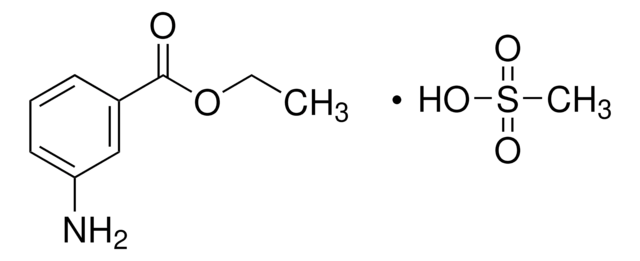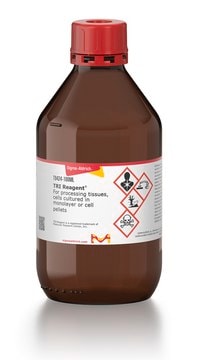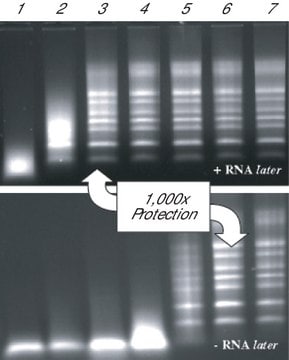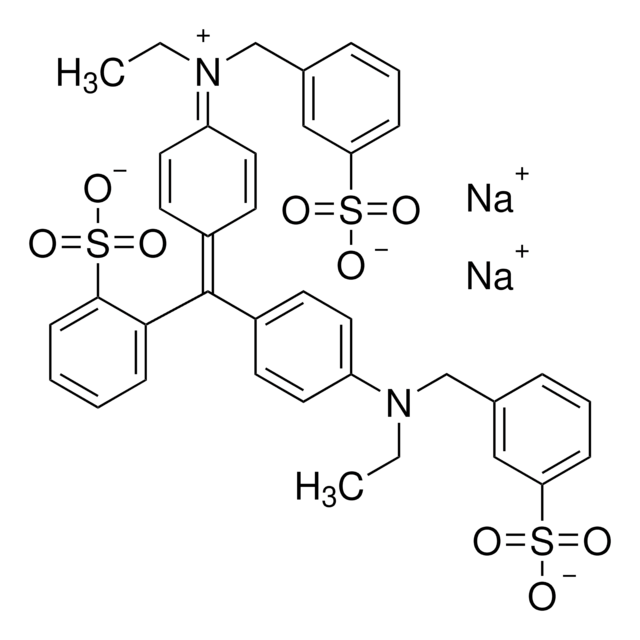おすすめの製品
グレード
analytical standard
品質水準
テクニック
HPLC: suitable
gas chromatography (GC): suitable
mp
~148 °C
アプリケーション
forensics and toxicology
pharmaceutical (small molecule)
フォーマット
neat
SMILES記法
CS(O)(=O)=O.CCOC(=O)c1cccc(N)c1
InChI
1S/C9H11NO2.CH4O3S/c1-2-12-9(11)7-4-3-5-8(10)6-7;1-5(2,3)4/h3-6H,2,10H2,1H3;1H3,(H,2,3,4)
InChI Key
FQZJYWMRQDKBQN-UHFFFAOYSA-N
類似した製品をお探しですか? 訪問 製品比較ガイド
詳細
アプリケーション
- ラテラルフロー・イムノクロマトグラフィーストリップ(LF-ICS)法を用いる 魚試料中のトリカインの分析のための 抗TMSモノクローナル抗体(mAb) の調製
- 高速液体クロマトグラフィー-タンデム型質量分析(HPLC-MS/MS)による分析のための、 コイの血液、筋肉、肝臓の試料からのトリケインメタンスルホン塩の改変QuEChERSサンプル抽出
- 2重検査ラインの3色イムノクロマトグラフィー試験ストリップ(TS-DTL)を用いる 養殖水、魚、エビの試料におけるメシル酸トリカインおよびマラカイトグリーンの多成分残留検出
- サンプル処理のために固相抽出を用い、 定量のために液体クロマトグラフィー-タンデム型質量分析(LC-MS/MS)を用いる 水試料のMS-222分析
その他情報
シグナルワード
Warning
危険有害性情報
危険有害性の分類
Aquatic Chronic 3 - Eye Irrit. 2 - Skin Irrit. 2 - STOT SE 3
ターゲットの組織
Respiratory system
保管分類コード
11 - Combustible Solids
WGK
WGK 3
引火点(°F)
Not applicable
引火点(℃)
Not applicable
個人用保護具 (PPE)
dust mask type N95 (US), Eyeshields, Gloves
適用法令
試験研究用途を考慮した関連法令を主に挙げております。化学物質以外については、一部の情報のみ提供しています。 製品を安全かつ合法的に使用することは、使用者の義務です。最新情報により修正される場合があります。WEBの反映には時間を要することがあるため、適宜SDSをご参照ください。
Jan Code
A5040-5G:
A5040-100G:
A5040-250G:
A5040-BULK:
A5040-VAR:
A5040-25G:
この製品を見ている人はこちらもチェック
ライフサイエンス、有機合成、材料科学、クロマトグラフィー、分析など、あらゆる分野の研究に経験のあるメンバーがおります。.
製品に関するお問い合わせはこちら(テクニカルサービス)











